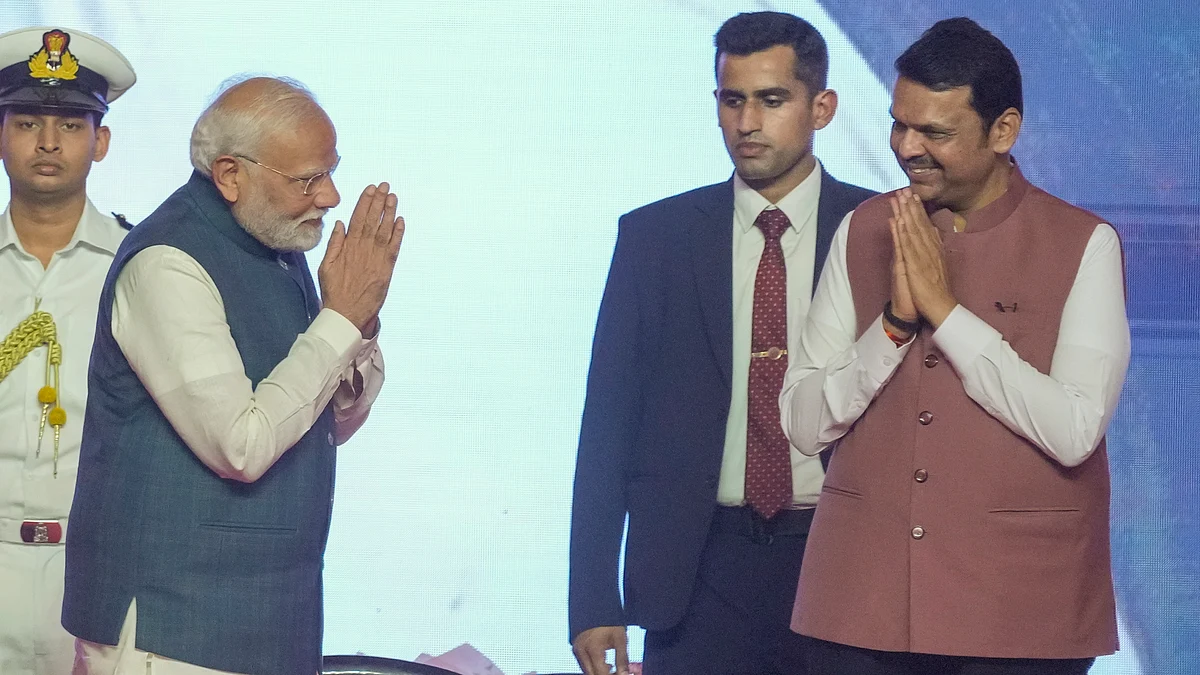
Fadnavis' Appointment Shows That BJP Can Ignore RSS Only at Its Own Peril
The message from the Sangh was loud and clear. The CM had to be from the BJP and Nagpur’s choice was Fadnavis.

advertisement
The choice of Devendra Fadnavis as Maharashtra's chief minister is an indication that winds of change are blowing within the BJP after an unexpectedly poor show in the 2024 Lok Sabha polls, which left it short of a majority for the first time in ten years.
In a marked departure from the preferred formula of experimenting with lightweight CMs whose lack of political stature guarantees blind loyalty, the high command in Delhi bowed to pressure from the local party cadre and the RSS' top brass to install someone who has evolved into a mass leader and is now a man of substance.
There are many dimensions to the importance of being Fadnavis. First and foremost, is the RSS hand in his appointment. Ten days of intense negotiations and high drama preceding the decision revealed some well-kept secrets about internal pulls and pressures between the BJP and the RSS.
It is now evident that Shiv Sena chief and former chief minister Eknath Shinde was not the only one opposing the appointment of Fadnavis as CM. Several Maharashtra BJP leaders as well as a section of the high command in Delhi were reluctant to hand him the reins of power.
While Delhi was keen to placate Shinde for various political reasons, Nagpur was equally firm that this time around, the BJP’s claim to the CM’s post cannot be ignored, not after its thumping victory.
The BJP is the dominant partner in the alliance by a large stretch with 142 seats to the Sena’s 57 and Ajit Pawar NCP’s 41.
It is significant that at around the same time as Mahayuti leaders Fadnavis, Shinde and Pawar flew into Delhi for initial discussions on government formation, RSS chief Mohan Bhagwat was also in the capital.
If there is one lesson Delhi learned from this year’s round of elections, it is this: it can ignore Nagpur only at its own peril. Non-cooperation by the RSS cadre, particularly in UP and Maharashtra, contributed to the BJP’s losses in crucial Lok Sabha seats.
On the other hand, extensive groundwork by the RSS helped to script the sudden turnaround of the BJP’s electoral fortunes between the general election and the assembly polls in Haryana and Maharashtra.
Another important factor driving the decision was Fadnavis’s own determination to claim what he felt was rightfully his after he helped script the party’s mammoth showing in the polls.
He was the party’s face through the campaign and notched up as many as 64 rallies in all six regions of the state.
It has become rare in Modi’s BJP for a state leader to assert himself the way Fadnavis did. Consider the tame surrender by veteran Madhya Pradesh’s former chief minister Shivraj Singh Chauhan after he helped the party sweep the 2023 assembly elections on the back of the popular Ladli Behena financial scheme for women.
He meekly allowed Delhi to replace him with a nonentity like Mohan Yadav who even after a year in office, remains an unknown figure in large parts of the state.
With his return as Maharashtra chief minister, Fadnavis now joins UP’s Yogi Adityanath and Union Home Minister Amit Shah in an emerging pantheon of Gen Next leaders who are likely to be groomed for a post-Modi scenario when the need arises.
Fadnavis and Yogi are in their fifties and Shah is sixty. All three have many years of politics left in them. Few in the BJP imagined that there would come a day when new shoots would appear and be allowed to grow in the shade of a towering tree called Modi.
(Arati R Jerath is a Delhi-based senior journalist. She tweets @AratiJ. This is an opinion piece and the views expressed above are the author’s own. The Quint neither endorses nor is responsible for the same.)
- Access to all paywalled content on site
- Ad-free experience across The Quint
- Early previews of our Special Projects
Published: undefined